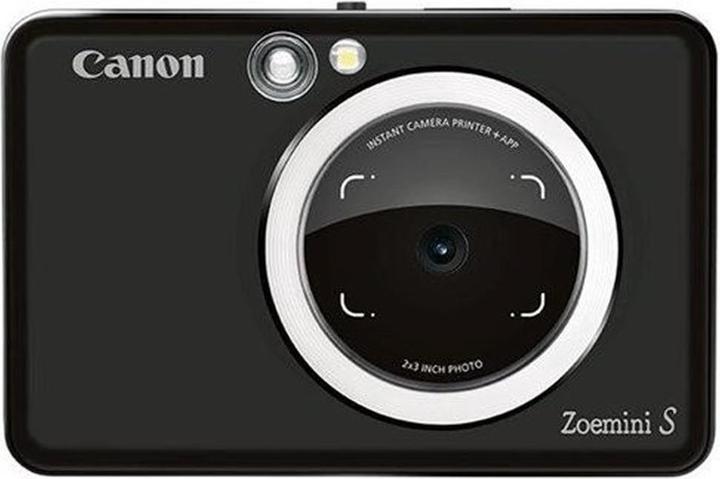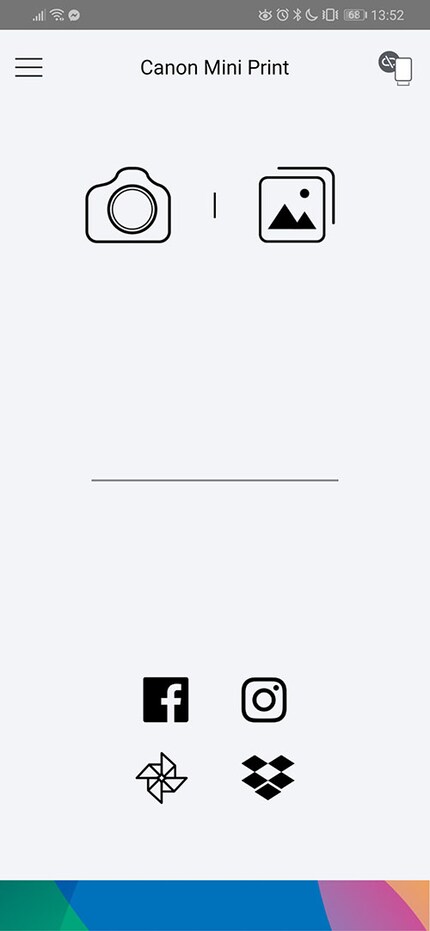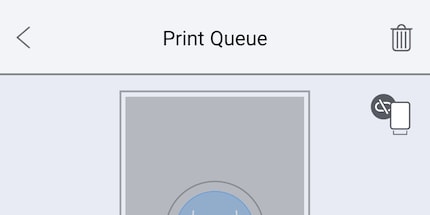

Canon Zoemini S tested: all junk, but still damn fun
There is no photographic reason to buy a Canon Zoemini S. But there is a big "but" that makes the camera a good companion. The thing is great fun.
"It's definitely something that exists," is the first verdict on the Canon Zoemini S. A thing that Canon has thrown onto the market because something had to be thrown onto the market. That's why the engineers at Canon presumably hunkered down, somehow wildly assembled components from the lab's own rubbish dump, used scrap parts from a printer and then smeared the whole thing with old pink paint. And that's it.
It's not that simple. Or not quite. For once, the manufacturer's marketing is 100 per cent accurate. Hence the really lurid headline above, which Canon's Marketing Department certainly doesn't like. But it should get a nice click rate. Sorry, not sorry.

Comparing the Zoemini to a camera is a bit of a misnomer. It's more of a toy than a camera. It takes pictures, yes, but they are not good. For comparison, my Sony a7sii doesn't take any stickies. Neither camera is any good as a plough, which also makes the comparison with large agricultural equipment invalid. Nevertheless, the Zoemini is interesting enough for a review, because even if you ignore the camera as a professional photographer, you will hopefully be well entertained by this article.
Quality like in 2003
Somehow the idea of the stickers is funny. Because the Zoemini is something like a Polaroid camera. You load the blank stickers into the paper tray, take a photo, wait what feels like sixteen years and then a sticker in 76mm x 50mm format rattles out. And that's it.
I know potatoes that take better pictures. In purely photographic terms, the Zoemini delivers roughly the same results as my mum's old Olympus C-350 Zoom from 2003. But not as a digital file, but as a print. Colours pale, lines surprisingly clear, but all in all a bit gurky. The trash look seems to be fashionable with the Zoemini.

Finding technical data is somehow not that important, even if Canon lists it well. There is a lens, 8-megapixel strong, F-stop unknown, irrelevant. There is a mirror around the lens. Should be good for selfies. Around the mirror is a "ring light" that only half deserves its name. The LEDs around the lens illuminate faces, but only at about half the arm's length of a 1.73 metre tall Vanessa Kim. Further away, the ring light does nothing in our inexplicably dark office on the fifth floor of an office building with a glass façade.
How, however, a Zoemini with an 8-megapixel camera can go head-to-head with a sixteen-year-old 3.2-megapixel camera is not explained by Canon.
The test with street art and stock photos
Somehow, the camera finds its way into the luggage of video producer Stephanie Tresch and me. We shoot pictures of street art in a backyard in Zurich. Because that's what Zoemini's hip target audience does. Either that, or jumping up in the air in front of a wall. Does anyone actually know what the crazy "I'm going to jump in the air" shot is all about?

Source: Canon
Since Stephanie is an expert with the camera and likes the unicorn with a heart, she takes the pictures. Meanwhile, I take pictures of her taking pictures. Also hip. It's called street photography. Or something like that. And somehow I have to illustrate this article.
The pictures rattle out of the camera. It's funny. Now we have stickers of street art. But as the colours all look a bit washed out, one question arises: is it the Zoemini's lens or the built-in printer?
Printing with the Bilderbüechli app

After installation, however, things get a little more complicated. The app itself does not show you whether a printer - which is how Zoemini identifies itself to your phone - is connected or not. However, everything is displayed with large images and icons. However, simply connecting the mobile to the Zoemini via Bluetooth is not enough. You must first assign the printer to the app in the app settings. Otherwise it won't work. Both in the Bluetooth menu and in the app, the Zoemini is not called "Zoemini" or something along those lines, but something like "Canon (3E:E3) Instant Camera". To do this, go to "Settings" in the hamburger menu at the top left and then "Add Printer".


After that, you can use the app in much the same way as you use the Instagram app. Put a picture on the screen, text over it, or avocado emoji and then off to the printer. This is where it gets a little complicated again. As the app tries to get by without text, it's not entirely clear what's going on. You can see a battery indicator at the top right. Maybe. If you see it, then the camera is connected to the app. If not, then it's not.

The printer queue, which is traditionally one of the most unbearable aspects of a computer, isn't much more likeable in an app, even if it is more colourful. You see all your images in the queue and they are then printed one by one. If you don't want to print an image, click on it once until the red pause image appears in the top right-hand corner of the thumbnail. This may all sound pretty self-explanatory, but you can either read about it here or go to the trouble of figuring it out yourself and wasting printer paper. And that's expensive.
The printer comparison with Bluetooth and without
It's easy to determine whether the problem lies with the printer or the lens. Theoretically at least. Because the Zoemini also works as a Bluetooth printer. In other words, you can send pictures from your smartphone to the Zoemini and it will then print them out. Of course, this is only possible via an app called Canon Mini Print.
The comparison between the printouts of the following images:

- Photo from Zoemini: Stephanie Tresch's impression of a slightly creepy graffiti bunny
- Photo from Huawei P30 Pro: Woman with bunny mask on backpack
- Photo from Sony a7sii: Picture of a Sony a7iii in the studio
- Stock photo of a wet otter
The shooting techniques and technologies differ here just as much as the amount of stuff that an artificial intelligence has included. Or how much a human has changed via Photoshop. But it's not about the quality of the photography, it's about the quality of the printer. Does the mini printer spit out better images if the snapshots don't come from the Zoemini's camera?
No, it doesn't spit them out. The printer struggles with grey tones in particular. The studio shot from the Sony a7sii looks like a normal printer would run out of colour. However, as the Zoemini has no cartridges, this is no longer the case.
The Zoemini uses Zink technology. This is actually spelt ZINK™, but we don't do that as a matter of editorial principle. However, it is relevant here because it is not the element zinc, but an abbreviation for the words "zero" and "ink". The colour is already incorporated into the paper, which also explains the horrendous price of the stickers. At the top of the paper is an overcoat, at the bottom a base layer. In between are layers of colour with a kind of crystal. When you unwrap the zinc paper, the crystals are unheated and look like white paper. The colours are activated and mixed by heat. This is actually extremely clever, but makes for some strange colours.

The zinc paper fails especially with the grey and white tones. No jumper is as white as Stephanie's, especially as the item is slightly mottled grey in real life. On the other hand, the table under the a7iii is not as reddish. At the far end of the table where the camera rests, I can see some red if I look closely - but never to this extent. Zink has a pretty good grip on green, though. The picture of the young woman with the rabbit mask on her rucksack looks really good. But as I remember the spontaneous shoot in Vienna, I know that I was looking for a slightly broken, scratchy look with exaggerated colours and contrast. A 1990s punk zine aesthetic. My colleague Stock-Otter looks okay, except that he seems to have dreadlocks instead of single hairs. The hair merges into patches of colour that look more like a picture with the contrast turned up than the photo of the critter. Colour control and nuance in the image are definitely not the Zoemini's forte, even if this zinc thing is technologically fascinating.
But according to Canon's Marketing, the Zoemini is not about taking good pictures, it's about having fun. With this camera and print quality, nothing else is possible. The Zoemini is supposed to be something you can leave lying around at a party and take snapshots with. These are then printed out and then the party guests run into the same problem as me and Stephanie: what to do with the stickers?
A few words in conclusion: Technologically, the Zoemini is nothing. The zinc technology is interesting, but either not the last word in wisdom or not yet developed enough to really deliver anything good. But I will admit that it is fun. At some point I didn't care about the image quality and just took snapshots. I usually gave the prints away as gifts and the people I photographed either enjoyed them or certainly had a good laugh. I was also able to write an article in which I could make comparisons with a sixteen-year-old camera, write openly about creepy bunny graffiti and investigate a new technology. Zoemini, you're really fun.
Journalist. Author. Hacker. A storyteller searching for boundaries, secrets and taboos – putting the world to paper. Not because I can but because I can’t not.
These articles might also interest you

Product test
How good is the Hoppstar Artist? A hands-on test of the instant camera for kids
by Anna Sandner

Product test
Portable printers – because photos you snap on your phone deserve a moment in the spotlight
by Michelle Brändle

Product test
Instax Wide Evo: this hybrid camera from Fujifilm can do more than you’d think
by Michelle Brändle
